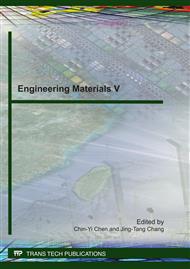p.1
p.8
p.13
p.22
p.27
p.34
p.40
p.48
p.54
AZ80 Mg Alloy Synthesized by Spray Forming and its Extrudability
Abstract:
Magnesium materials are gaining an increasing interest especially in transportation industries. The goals are the reduction of fuel and the reduction of the green house gas CO2. To achieve these goals, the weight of vehicles must be reduced. Compared to Al based materials, Mg based materials offer the possibility of saving up to 30% in weight. Unfortunately the latter suffer from poor workability. The workability of AZ91B has been proven to be improved significantly by employing the rapid solidification process, Spray Forming. In this study, the AZ80 Mg alloy was synthesized via Spray Forming process. The microstructures were characterized and compared with conventionally cast materials. The workability of the spray-formed AZ80 Mg alloys was studies via a simple extrusion process. The effects of the extrusion speed and temperature on the workability were investigated.
Info:
Periodical:
Pages:
27-33
Citation:
Online since:
April 2011
Authors:
Keywords:
Price:
Сopyright:
© 2011 Trans Tech Publications Ltd. All Rights Reserved
Share:
Citation:


